Tehran, the heart of Iran, stands between mountain and desert, where ancient traditions quietly endure beneath the pace of modern life. The city’s wide avenues, tiled mosques, old mansions and shaded gardens still carry the memory of kings, poets, and revolutionaries, making it the best of Tehran historical places. Every corner holds a reminder of the past. Tehran’s historical places reveal stories shaped by Qajar royalty, Pahlavi power, and the rise of a nation. From the gold-lined halls of Golestan Palace to the silent corridors of old prisons, these places are not just preserved; they are still alive.
10 Famous Tehran Historical Places
This is the list of Tehran historical places to explore, which were the homes of kings, seats of judgement, and places of prayer.
1. Golestan Palace
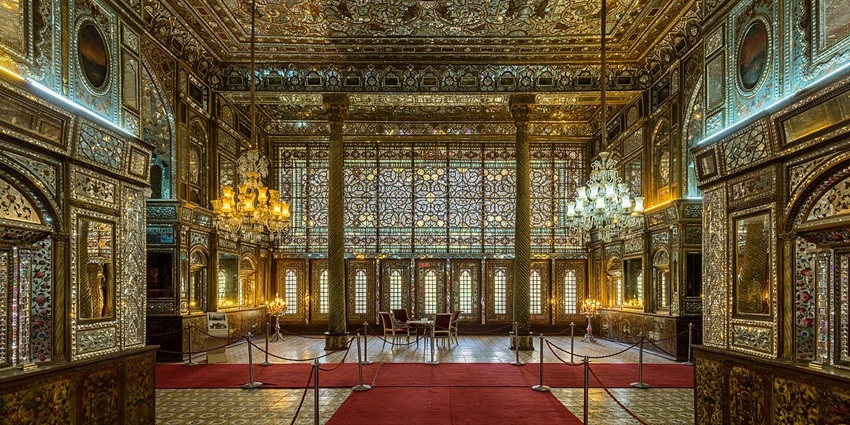
Photo: Diego Delso / Wikimedia Commons
Golestan Palace holds the memory of Tehran’s royal past with quiet strength, one of the best Trehan historical places. Built during the Safavid period and expanded by Qajar rulers, it once stood at the heart of the city’s old fortified centre. The walls are lined with mirrors, fine tiles, and European-inspired details brought back by Naser al-Din Shah after his travels. The throne hall where kings once received guests, the peaceful garden that offers a break from the busy streets, and the museum rooms that still feel lived in.
How To Reach: Located in Arg Square; take Metro Line 1 to Panzdah-e-Khordad Station, then walk 10 minutes.
Cost: Around 2,500,000 IRR for foreign visitors (prices vary per hall).
Timings: Daily, 9 AM – 5 PM
Nearby Attractions: Grand Bazaar, Shams-ol-Emareh, Imam Khomeini Mosque.
2. National Museum of Iran

Photo: Ondřej Žváček / Wikimedia Commons
The National Museum of Iran, one of Tehran historical places. The building is simple, shaped by brick and inspired by Sassanid arches. Inside, the quiet halls are filled with clay tablets, ancient tools, stone carvings, and delicate artefacts that tell the story of Iran from its earliest civilisations. Every object here comes from a land that has seen kings rise and empires fall. Pieces from Persepolis, old pottery from Susa, coins, jewellery, and even parts of statues worn by time, each have found a home in these galleries.
How To Reach: Walkable from Imam Khomeini Metro Station (Line 1).
Cost: Around 200,000 IRR for locals, 1,000,000 IRR for foreign visitors.
Timings: 9 AM – 5 PM
Nearby Attractions: Golestan Palace, Ebrat Museum, Masoudieh Palace.
3. Niavaran Palace Complex
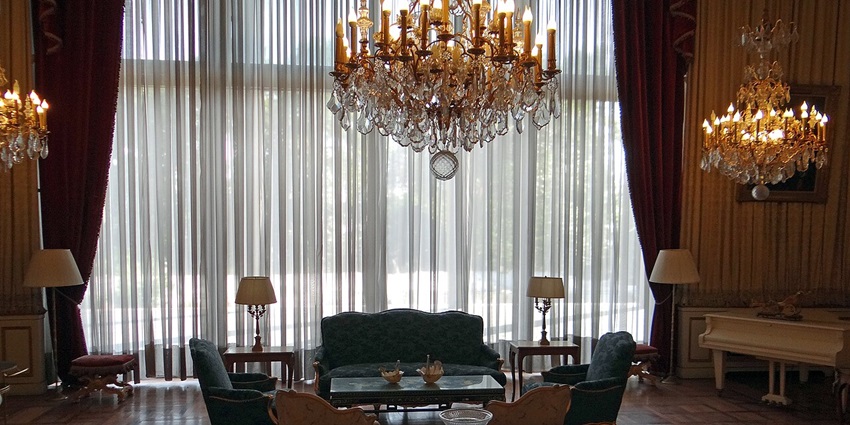
Photo: Own work / Wikimedia Commons
The Niavaran Palace Complex brings you closer to the final years of Iran’s monarchy. The air feels cooler here, and the trees are taller, but the history weighs just as heavily. The main palace, completed during the reign of Mohammad Reza Shah, blends traditional Iranian forms with modern elements. Its interiors are a careful mix of European furniture, Persian carpets, and walls covered in art and personal belongings that were never removed. One of the most striking parts is the library, left as it was, with shelves full of books untouched since the revolution.
How To Reach: Located in the north of Tehran; take Metro Line 1 to Tajrish Station, then a short taxi ride.
Cost: Entry from 3,000,000 IRR for the whole complex.
Timings: 9 AM – 5 PM
Nearby Attractions: Jamshidieh Park, Sa’dabad Complex, Tajrish Bazaar.
4. Sa’dabad Palace Complex
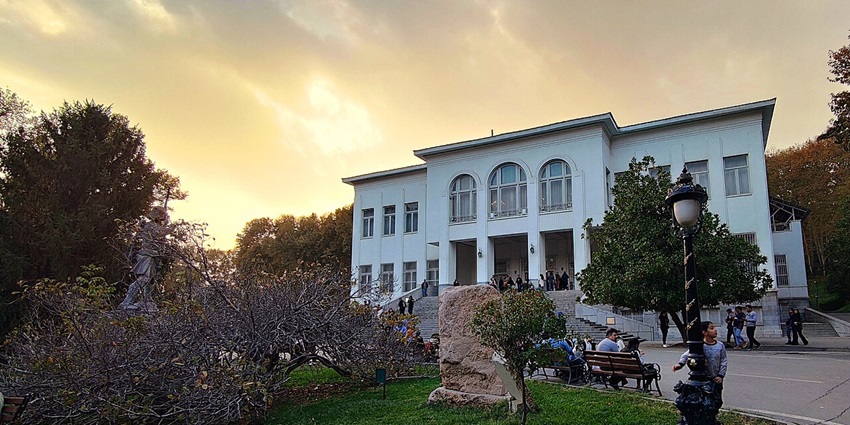
Photo: Hamidreza Abyanaki / Wikimedia Commons
The Sa’dabad Palace Complex stretches across a massive estate once used by Iran’s royal families during the summer months. It covers more than 300 hectares. The paths are lined with old trees, and the buildings sit quietly among the greenery. It was a resting place for Kings, meeting guests, and walking the same trails visitors walk today. Among the Trehan historical palaces, the Green Palace shines with fine mirrorwork, while the White Palace still holds furniture and photos from the Pahlavi period.
How To Reach: Accessible via Metro Line 1 to Tajrish Station; taxis are available onward.
Cost: Around 2,000,000 IRR per palace; full access passes available.
Timings: 9 AM – 5 PM
Nearby Attractions: Niavaran Complex, Darband, Tajrish Bazaar.
5. Treasury Of National Jewels
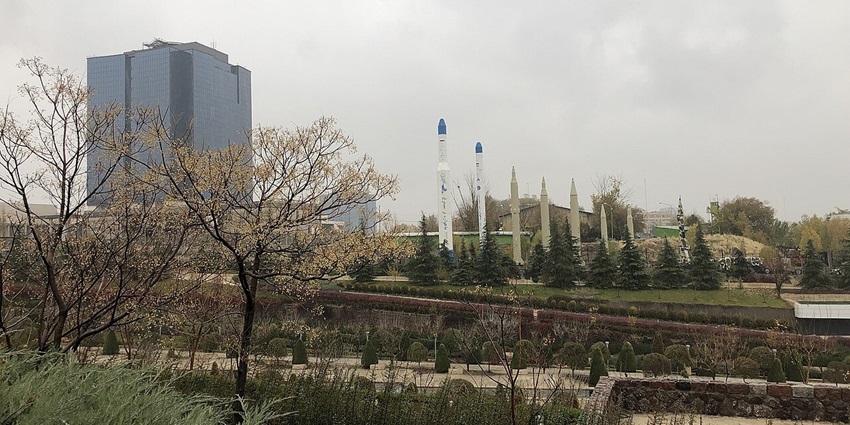
Photo: GTVM92 / Wikimedia Commons
The Treasury of National Jewels is held beneath the Central Bank of Iran. This vault contains one of the most valuable collections of royal jewellery in the world. The room is dimly lit, guarded, and silent, but the displays are breathtaking. Among the most famous pieces is the Daria-i-Noor, one of the largest pink diamonds ever discovered. There are swords covered in gems, solid gold thrones, and crowns worn by Qajar and Pahlavi kings.. While many Tehran historical places speak through their walls, this one speaks through what it protects.
How To Reach: Located near Ferdowsi Metro Station (Line 4).
Cost: Around 2,000,000 IRR for foreign tourists.
Timings: 2 PM – 4.30 PM (Saturday to Tuesday),
Nearby Attractions: National Museum, Park-e Shahr, Glassware and Ceramic Museum.
6. Ebrat Museum (Prison Museum)
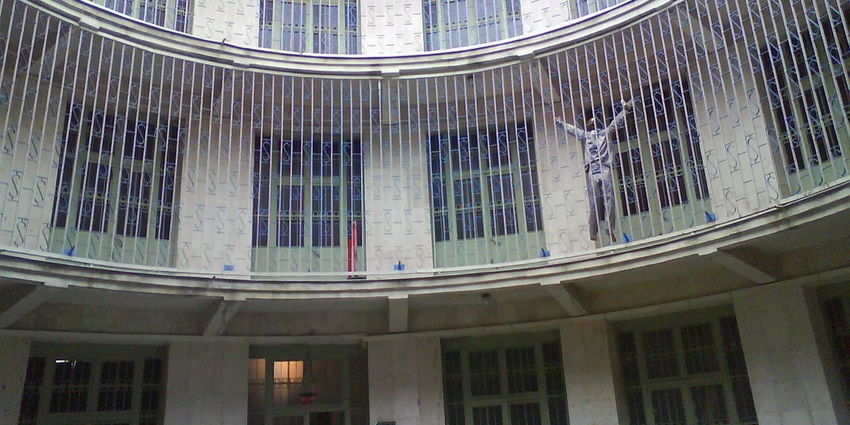
Photo: مانفی / Wikimedia Commons
Among all Tehran historical places, the Ebrat Museum leaves a deeper mark. This building once served as a prison during the reign of Mohammad Reza Shah and later continued its use after the 1979 revolution. From the outside, it looks like any old brick structure. The outside of the building stands in brick and silence. The prison cells are left as they once were, with thick doors, metal beds, and a stillness. Tools of torture are placed beside solitary cells. Old photos and worn letters show the faces and names of those who passed through.
How To Reach: Walk from Imam Khomeini Metro Station or take a local taxi.
Cost: Around 1,000,000 IRR.
Timings: 9 AM – 5 PM (closed Fridays)
Nearby Attractions: Golestan Palace, National Museum, Masoudieh Palace.
7. Masoudieh Palace
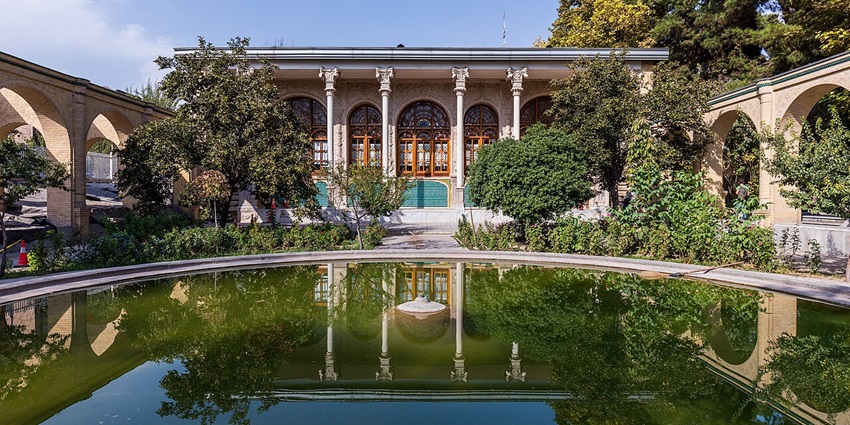
Photo: Diego Delso / Wikimedia Commons
Masoudieh Palace was built in 1879 for Prince Masoud Mirza, the son of Naser al-Din Shah. In those days, its rooms were used for gatherings, poetry recitations, and royal events. The palace was never cold or formal. It was lived in, spoken in, and shaped by the people who walked through it. The walls are still covered with old murals, coloured glass, and delicate tiles. Some of the designs have faded, but their beauty remains. They have survived wind, dust, and years of neglect.
How To Reach: Close to Baharestan Metro Station (Line 2).
Cost: Entry is about 500,000 IRR.
Timings: 9 AM – 5 PM, varies seasonally.
Nearby Attractions: Ebrat Museum, National Library, Lalehzar Street.
8. Reza Abbasi Museum
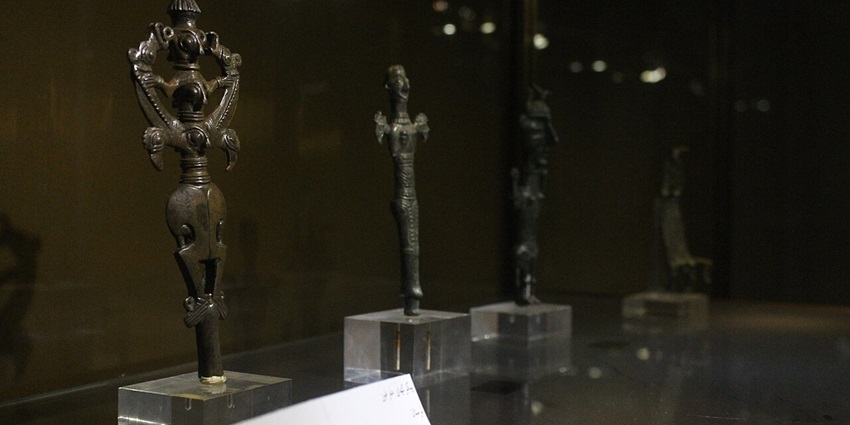
Photo: Hosseinronaghi / Wikimedia Commons
The Reza Abbasi Museum is named after one of the most skilled painters from the Safavid period, and it honours that legacy with care. Inside, you move through thousands of years of Iranian art. Early pottery, bronze tools, finely carved jewellery, delicate miniature paintings, and handwritten scripts are displayed in simple glass cases. The layout moves from ancient to recent, giving a clear sense of how Persian art changed over time. There is no grandeur in the building, just quiet respect for the work it holds.
How To Reach: Use Metro Line 3 to Shahid Beheshti Station; take a taxi.
Cost: Around 1,000,000 IRR.
Timings: 9 AM – 5 PM (Saturday to Wednesday)
Nearby Attractions: Artists’ Forum, Argentina Square, Abbas Abad Hills.
9. Toopkhaneh Square (Imam Khomeini Square)
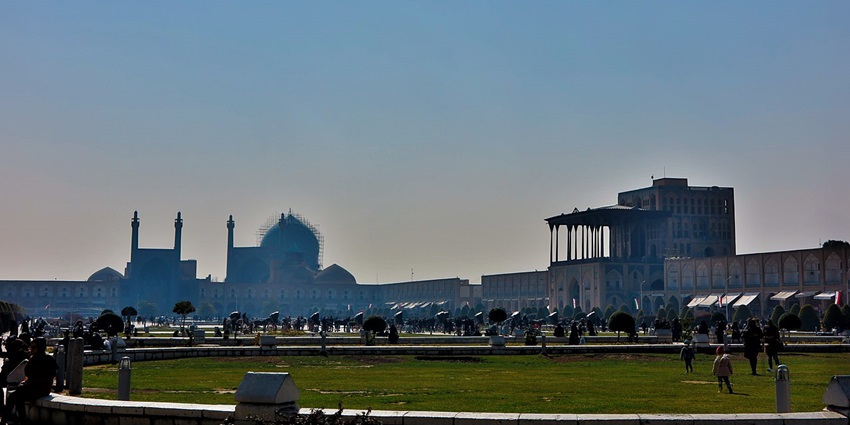
Photo: Amir Hossain Golestan / Wikimedia Commons
Toopkhaneh Square is one of the oldest public spaces among Tehran historical places. Built during the Qajar period in the late 19th century, it was once the centre of power and public life. Speeches were made here, newspapers were sold on corners, and political protests often began at its edge. The square has changed, but its role in the city’s memory remains. Today, buses and people still pass through it all day, but if you pause for a moment, the past is easy to imagine. The name changed after the revolution, yet locals still use the old one.
How To Reach: Direct access from Panzdah-e-Khordad Metro Station (Line 1).
Timings: 24*7
Nearby Attractions: Grand Bazaar, Golestan Palace, Bank Melli Museum.
10. Glassware And Ceramic Museum Of Iran (Abgineh Museum)
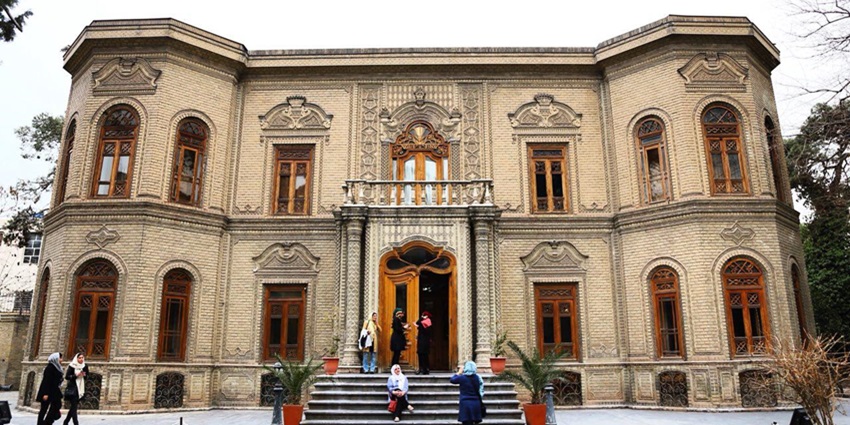
Photo: Mehrnaz Shapouri / Wikimedia Commons
The Glassware and Ceramic Museum sits quietly on a central street in Tehran, inside a Qajar-era house that once welcomed government officials and foreign diplomats. The wooden staircases creak underfoot, the coloured windows catch light in the afternoon, and the ceilings are covered in carved patterns that make visitors look up before they even reach the exhibits. The building feels like part of the collection. Inside, the rooms are filled with glass and ceramic works from across Iran’s long history.
How To Reach: Walkable from Ferdowsi Metro Station (Line 4).
Cost: Around 500,000 IRR.
Timings: 8 AM – 5 PM.
Nearby Attractions: National Museum, Park-e Shahr, Tehran City Theatre.
Tehran does not hide its past and stands quietly beside the present in palaces once filled with royalty, prisons that still echo with resistance, and museums that carry thousands of years of memory in a single room. These Tehran historical places are not just preserved for display, they are still part of the city’s daily rhythm. Explore more such packages offered by TripXL, and check out the lists of your bucket list.
Cover Photo: Ninara / Wikimedia Commons


 WhatsApp
WhatsApp
 Twitter
Twitter









